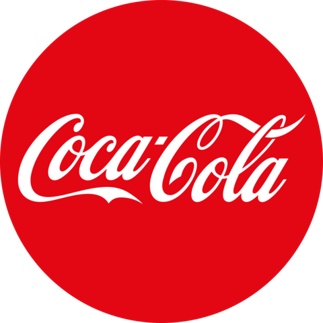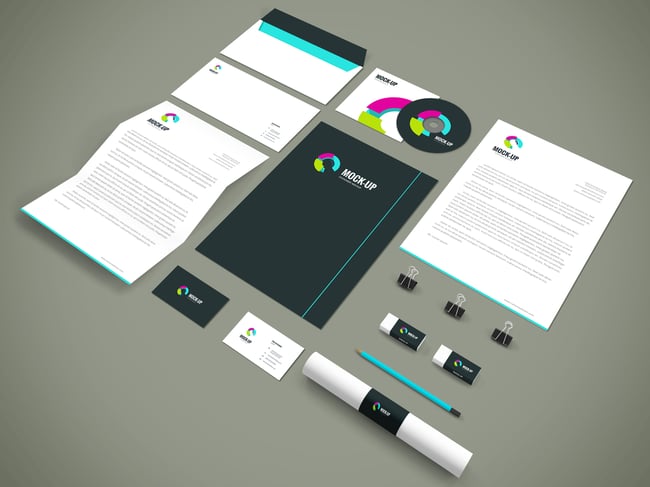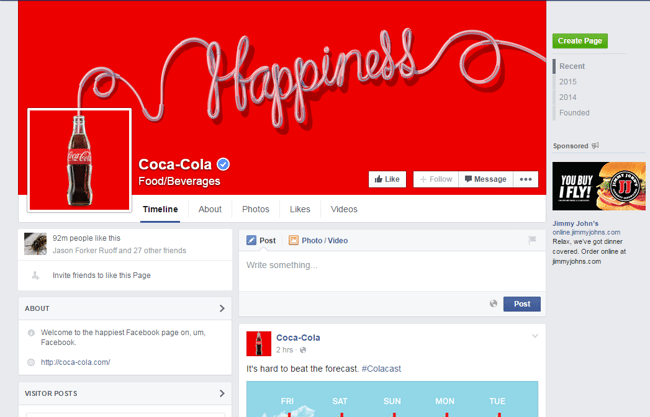Brand Identity
The terms "brand" and logo" are often used interchangeably. But though a logo can be the symbol of a business, it is not the entirety of a brand. In fact, creating a logo is just one small step toward developing a strong brand identity.
With millions, if not billions, of businesses trying to make a name for themselves, having a strong brand has become crucial for businesses to differentiate themselves from their competitors and that is where Brandsparkle can help you and your brand.
If you're working to develop your first brand identity for a client, or you're doing this for your own business, it's important to first understand what a brand is and what it takes to create one. Unfortunately, it's not as easy as giving the business a name and plastering it on everything.
Originally, the term "brand" was used for referring to the mark that cattle ranchers "branded" on their cattle, the idea of a brand has evolved to encompass much more than just a name or a symbol.
Your brand, a vital part of your brand identity is defined as a name or a type of product manufactured by a particular business.
What is brand identity?
A brand identity is made up of what your brand says, what your values are, how you communicate your product, and what you want people to feel when they interact it. Essentially, your brand identity is the personality of your business and a promise to your customers.
As Jeff Bezos says, "Branding is what people say about you when you're not in the room."
Your product leaves an impression on your customers long after you've made the sale. Brand identity is the process of shaping that impression.
Strong Brand Identity Examples
- Coca-Cola
- Hustle & Hope Greeting Cards
- POP Fit
- Burt's Bees
- Asana
- Semicolon Bookstore & Gallery
1. Coca-Cola

When you hear the name Coca-Cola, you probably picture its well-known logo, shown above.
But you also might think of the polar bear, the color red, its "Share a Coke" campaign, or the classic ribbon-like imagery featured on its cans. Here are two things that comprise Coca-Cola's brand identity:
- Coca-Cola's brand identity begins with a red logo in script text. The red color elicits confidence in the person who drinks a Coke, while the script typeface is all about enjoyment. Coffee, for example, is a drink you have before work in the morning. Coca-Cola is a drink you enjoy when you're done in the afternoon. This is the brand's "face."
- Coca-Cola prints its logo on a uniquely shaped bottle (it's true, no other beverages have bottles exactly like it). This tells customers this is the real thing. The brand develops credibility and trust this way.
2. Hustle & Hope Greeting Cards

Hustle & Hope is a brand that positions their products as more than a greeting card. Their stationary and cards tackle more difficult topics such as job hunting and personal development. By pairing simple inspirational messaging with a code on the back of the card that leads to digital content and tips, the cards are meant to "level up" the recipient in some way.
Founder Ashley Sutton always wanted to start a stationery company, but after a career working in some of the top Fortune 500 companies, she became passionate about empowering people to be their best professional selves. That's when she had an epiphany that would later become the basis of what makes her company unique: "Why not sell cool greeting cards AND help people!" Here's how this brand's identity is executed:
- All the paper products use modern, colorful designs that pop off the page and slogans that go beyond generic well wishing.
- The experience of scanning the code is a novelty that makes an impression, both with the product itself as well as its mission to drive an idea home.
3. POP Fit

POP Fit has a beautiful brand with bright pinks, purples, and yellows, but that's not even a main element of their brand identity. Perhaps one of the most stunning thing about this brand is their radical representation found in all their messaging. According to their website, "POP Fit Clothing was built on the idea that representation, inclusivity, and body positivity matters in both fashion and media." This is why their sizes range from XXS to 4XL and feature signature fabric with a four-way stretch.
- POP Fit's advertising supports their message of inclusivity, featuring women of color, wheelchair users, and diverse body types. Their images are also unretouched, showcasing their diverse models realistically and respectfully.
- Their products solve for massive pains in the athletic clothing industry, such as sizing issues, lack of pockets, and transparency or rolling while doing squats and other exercises.
4. Burt's Bees

After humble beginnings in beekeeping and selling honey, Burt's Bees grew to meet the need for all-natural and sustainable personal products. The company seeks to "make thoughtful choices to reduce our impact on nature and work to protect biodiversity, which preserves our own place in the world."
Their initial logo (pictured above) depicting the bearded founder underscores the feeling of simplicity and modesty. This is in stark contrast to aesthetics that other beauty and personal care products embody. Here's how else the brand distances itself from flashiness, sticking to its nature-obsessed focus:
- Burt's Bees responsibly sources ingredients for their products and use recyclable packaging.
- They give to conservation projects and other green initiatives.
5. Asana

Asana's mission is "to help humanity thrive by enabling the world's teams to work together effortlessly." The founders began at Facebook, where it was clear that they needed a project management and collaboration tool, and it was clear that their creation impacted the company in a positive way.
In Sanskrit, "Asana" refers to a specific pose in which yogis sit, and the company name is in homage to the Buddhist principles of focus and flow. This along with their values of "doing great things, fast" and teamwork is manifested clearly in their visual brand as well:
- Asana uses a lot of white space for focus with bursts of color to "inject energy" into the workspace.
- The three dots in the logo are arranged together, signifying balance and collaboration.Why is brand identity so important?
As the embodiment of almost everything your business is and does, according to Purely Branded, a brand "lives and evolves in the minds and hearts" of consumers. Its identity, therefore, is crucial to the business's future.
So, if your brand is more than just its logo, how can you replicate what brands like Coca-Cola have done and tap these other elements of your business's identity? Here are six components of a well-developed brand identity, and why it's so important for you to develop them.
The "Face" of Your Business
For all intents and purposes, your brand's logo is the "face" of your business. But that face should do more than just look cool or interesting -- a logo's contribution to brand identity is associative, too. It tells the public that [this image] means [the name of your company].
Credibility and Trust
Having a brand identity doesn't just make your product more memorable; it makes your brand more authoritative in the marketplace. A brand that establishes a face, and maintains that face consistently over time, develops credibility among its competitors and trust among its customers.
Advertising Impressions
A brand identity is a template for everything you would include on an advertisement for your business -- whether that ad is in print, online, or a preroll commercial on YouTube. A brand with a face and industry credibility is well prepared to promote itself and make impressions on potential buyers.
Your Company's Mission
When you create an identity for your brand, you're giving it something to stand for. That, in turn, gives your company a purpose. We all know companies have mission statements, right? Well, you can't have one without first giving your brand an identity.
Generating New Customers and Delighting Existing Ones
A brand identity -- one with a face, trust, and a mission -- attracts people who agree with what your brand has to offer. But once these people become customers, that same brand identity gives them a sense of belonging. A good product generates customers, but a good brand generates advocates.
If you want your business to become a well-known and beloved brand name, it's going to take some work. The following steps will help you build a brand identity. They are simple steps; implementing them, however, is another story.
How to Create a Brand Identity
- Research your audience, value proposition, and competition.
- Design the logo and a template for it.
- Integrate language you can use to connect, advertise, and embody on social media.
- Know what to avoid.
- Monitor your brand to maintain its brand identity.
1. Research your audience, value proposition, and competition.
Just like any other aspect of starting a business, the first step in creating a brand identity is to complete market research. You should clarify and understand these five things.
Audience
It's no secret that different people want different things. You can't (usually) target a product to a pre-teen the same way you would target a product to a college student. Learning what your audience wants from a business in your industry is vital to creating a brand people will love.
Value Proposition & Competition
What makes your business unique in your industry? What can you offer your consumers that others can't? Knowing the difference between you and your competition is imperative to developing a successful brand. Keeping an eye on your competitors will also educate you on what branding techniques work well and those that don't.
Mission
You know what your business offers, but be sure to have a clear and direct mission statement that describes your vision and goals. In other words, know your business's purpose -- you can't very well create a personality for a business unless you know what that business is about.
Personality
Even though you're not necessarily branding an individual, that doesn't mean that you can't be personable when developing a brand image. Use your type, colors, and imagery to represent who the brand is. Then enhance that visual representation with your tone of voice: Are you a confident business with a lot of sass, like Nike? Or are you ritzy and professional, like Givenchy? Either way, be sure to develop your brand as a way to represent your business.
Research may be boring, but the more you know about your business, the stronger your brand identity will be.
SWOT Analysis
Finally, completing a SWOT Analysis can be beneficial to better understand your brand. Considering the characteristics of the brand will help you find characteristics you want to portray in the brand. SWOT stands for:
- Strengths: Positive characteristics of your business that provide an advantage over your competition.
- Weaknesses: Characteristics that prove to be a disadvantage to your business.
- Opportunities: Changes and trends in your industry that offer opportunities for your business.
- Threats: Elements in the environment or industry that may cause problems for your business.
2. Design the logo and a template for it.
Once you know your business inside and out, it's time to bring your brand to life. In the words of graphic designer Paul Rand, "Design is the silent ambassador of your brand." Here's what you'll need to know:
Logo
Although the logo is not the entirety of the brand identity, it's a vital element in the branding process -- it's the most recognizable part of your brand. It's on everything from your website to your business cards to your online ads. With your logo on all of these elements, your branding should look as cohesive as this example:

Image via Creative Commons
Interesting Form
As imperative as your logo is to branding, it's not the only element that makes a brand identity strong. Your product(s), the packaging, or the way you present your services all need to play a part in your brand identity. Visually representing your business in everything you do will create consistency and help create a familiarity with your consumers. Take McDonald's golden arches for example. They used an interesting form to create the iconic "M," which is now recognizable all over the world.
Color & Type
Creating a color palette is a way to enhance your identity. It provides you with variety so you can create unique designs for your business while remaining faithful to the brand identity.
Type can also be a double-edged sword if not utilized properly. Although "mix and match" type design has become quite the trend, that doesn't mean mixing a handful of fonts is necessarily a good idea for your business. In your logo, on your website, and on any documents that your business creates (print and digital), there should be consistent use of typography. If you take a look at Nike's website and its ads, it keeps the same typeface and type style throughout all aspects of the business -- and it works wonders for them.
Templates
You probably send out emails, type up letters, or hand out business cards to potential customers on a daily basis. Creating templates (even for a detail as minute as email signatures) will give your business a more unified, credible, and professional look and feel.
Consistency
As mentioned in nearly every step already (I can't stress it enough), consistency is what can make or break a brand identity. Use the aforementioned templates and follow the design choices you've decided upon for your brand throughout all areas of your business to create a harmonious brand identity.
Flexibility
Yes, consistency is crucial -- but remaining flexible in a society that is always looking for the next best thing is just as important. Flexibility allows for adjustments in ad campaigns, taglines, and even some modernizing to your overall brand identity so you can continuously keep your audience interested. The key is keeping any changes you make consistent throughout your entire brand (e.g., don't change the design of your business cards and nothing else).
Document
One of the most effective ways to ensure a business sticks to its branding "rules" is to create a set of brand guidelines that document all of the do's and don'ts of your brand. Skype is one brand that has done an amazing job creating a clear, cohesive brand guide that anyone can follow. This is one way to empower people to build brand assets and share your brand while remaining brand compliant.
3. Integrate language you can use to connect, advertise, and embody on social media.
Now that you've established your brand within your company and have taken all the necessary steps to develop it, you're ready to integrate your brand within your community.
And one of the most successful ways to accomplish this is for your brand to provide quality content. In HubSpot's ebook Branding in the Inbound Age, Patrick Shea writes, "In every way, your content is your brand online. It's your salesperson, your store, your marketing department; it's your story, and every piece of content you publish reflects on, and defines, your brand. So, great content, great brand. Boring content, boring brand."
Language
Use language that matches that personality of your brand. If your brand identity is high-end, use professional language; if your brand is laid-back, be more conversational. The language you choose to use as a brand will be integrated throughout the entire business, so it's important that you carefully craft your tone to match your brand's personality.
Connection & Emotion
People love stories. More accurately, people love stories that move them (emotionally and to action). A strong brand identity can establish an emotional connection with consumers, which can be a solid foundation for building a lasting relationship with a brand.
Advertise
Designing ads, whether traditional or digital, is the most efficient way of introducing your brand to the world. It's a way to get the message of your brand seen and heard by your target audience.
Social Media
Another great way to establish a connection with your consumers is through social media. The plethora of platforms on the internet offers up a ton of digital real estate you can use to establish your brand identity. Coca-Cola, once again, makes great use of its Facebook cover photo real estate by keeping it consistent with the happiness theme.

Social media is also important when it comes to conversing directly with your customers and creating affinity for your brand. If you're mentioned in a tweet, status, or post (especially if the customer has a question or concern), be sure to give your brand a good reputation by responding efficiently to your customers.
4. Know what to avoid.
You can follow all the steps of creating a strong brand identity, but if you're guilty of any of the following practices, your brand might falter or fail.
Don't give your customers mixed messages.
Know what you want to say, and use the appropriate language and visuals to say it. Just because it makes sense to you doesn't mean it will make sense to your customers.
Don't copy your competitors.
Your competition may have exemplary branding, and since you're selling the same products or services, you might want to do what you know works -- don't. Take what they do into account, and put your own twist on it to make your business stand out in your industry even more.
Don't lose consistency between online and offline
Yes, your print material might look a little different than your online presence, but your colors, type, theme, and message should all be consistent.
5. Monitor your brand to maintain its brand identity.
Similar to other aspects of your marketing, it's difficult to know what you're doing right (and what you're not) without tracking key performance metrics. Use Google Analytics, surveys, comments, social media discussions, etc., to monitor your brand and get a sense of how people talk about and interact with you. This will give you the opportunity to implement changes to your brand as needed, whether it's to correct a mistake or to improve brand identity.
Creating a memorable brand requires consistent use of type, color, images, and language, but it's worth it. When consumers instantly recognize who you are and what you stand for all based on a logo, you've become more than just a name and a symbol.
If you need help creating an award winning brand, then contact Brandsparkle today and lets get started creating something memorable!